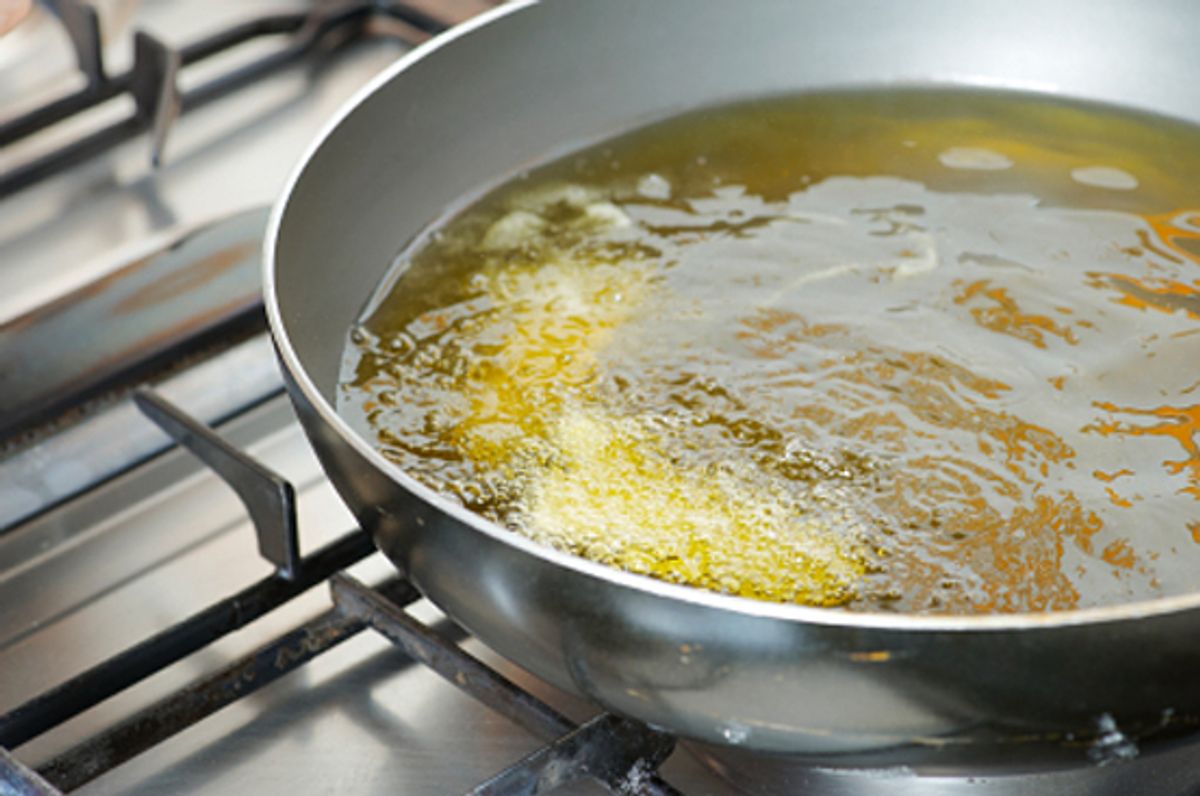With all this talk of French fries and turkey confit and other oil-submerged delights lately, it's time to address an age-old question: Can you reuse oils and fats? I mean, the stuff isn't cheap when you're using quarts of it at a time and just tossing it.
And the answer is: Yes! Or no! It's complicated (a little). The keys lie in how much you abused it to begin with, how you treat and store it, and what you plan on doing with it afterward.
Safety
First, from a safety perspective, you have to keep in mind that every oil has a smoke point, a temperature at which it, well, smokes -- and beyond that, a flash point, where it will burst into flames. It's exciting stuff, and more so if you happen to be standing next to it.
Anyway, most vegetable oils smoke somewhere between 400 and 450 degrees F when they're fresh, but that temperature will drop significantly -- up to 100 degrees -- even after one use at high heat. So what I'm saying is, oil used to sear or fry something at high heat should be reused carefully if at all: Keep a watchful eye on it; if it starts smoking, you know what will eventually come next. (For a smart and important but kind of terrifying discussion of this, check out Shirley Corriher's seminal food-science cookbook "CookWise.")
Flavor and quality
Still, there are those who insist that fresh frying oil doesn't have the character or flavor of "seasoned" oil. The great fried chicken master Charles Gabriel (whose recipe is here) says that one of the secrets to his fantastic chicken is the fact that he reuses his oil, strained through cheesecloth to clean it up (you can use a coffee filter) and mixed half-and-half with fresh oil for safety's sake.
On the other hand, the difference between "seasoned" and "dirty" oil is a matter of degree and perspective -- what seems "browned and nutty" to one person or on one day might be "furiously burnt" to the next. And used oils can quickly turn rancid from heat, light and air. So it's important to keep any used oils well-strained and tightly sealed in the fridge, and to give them a good, long whiff before using them. Make sure they smell like something you'd like your food to taste like, because it will.
A special note about fats from roasts and other delicious drippings
Yes, for the love of all that is holy, save this stuff, unless you happened to incinerate the roast or whatever. You can sauté in it (though, again, I'd use fresh oil for screaming-hot searing), use it to grease up some toasts or crostini, or even stir a little into a dish as a finishing touch, like you would butter or a good olive oil. The only caution I would give you here is again to make sure you strain it thoroughly through a very fine-mesh sieve or a coffee filter.
The other thing to consider is that the fat should be dry -- that is, to get all the moisture/water/juices out of it if you're not going to use it up in a few days, since that moisture can really speed up that whole rancidity thing. If there's a lot of juice, just separate it from the fat after it's gotten cold and solid. Or you can gently heat it all up until the bubbling stops and all the water's evaporated away.
Happy fatting!



Shares